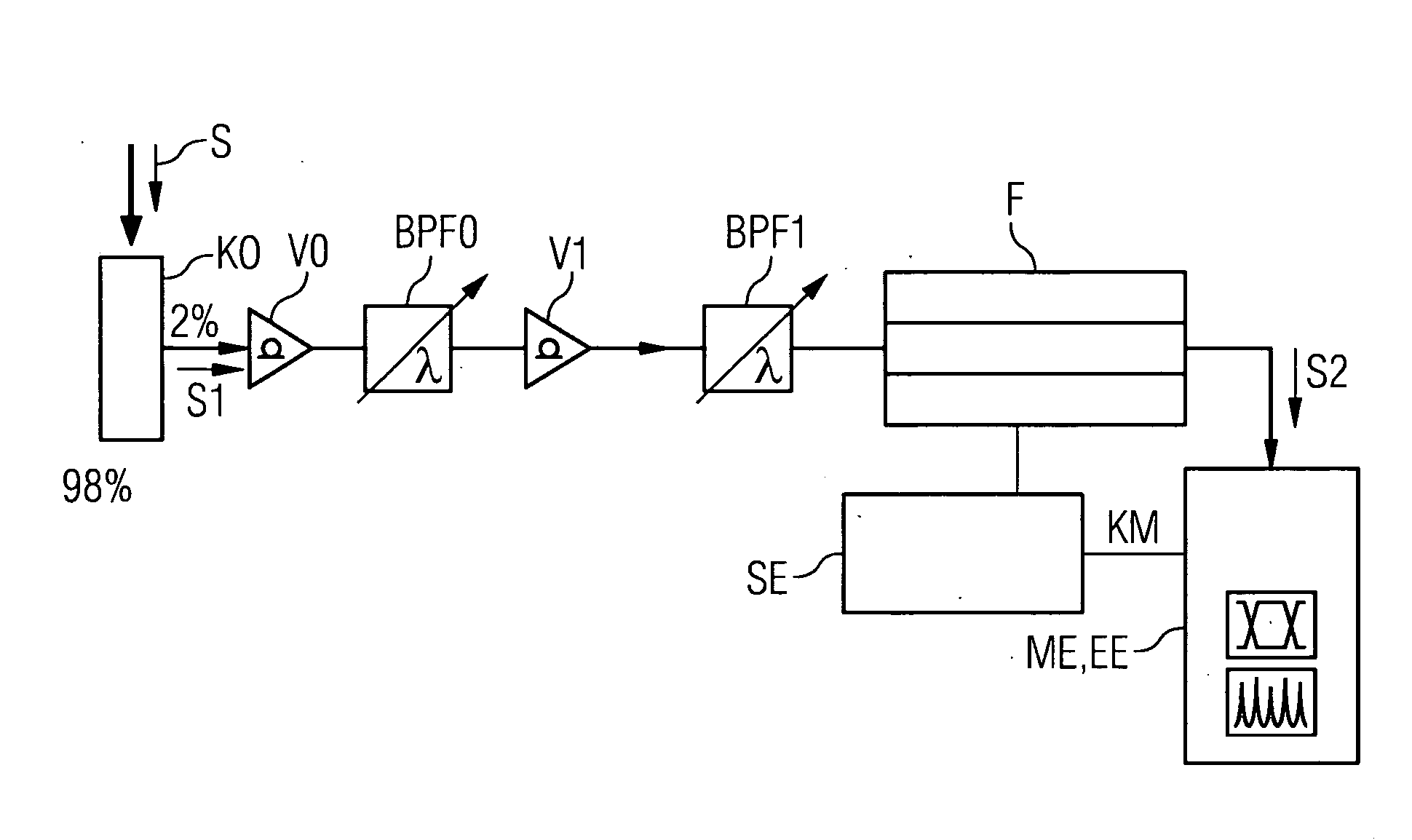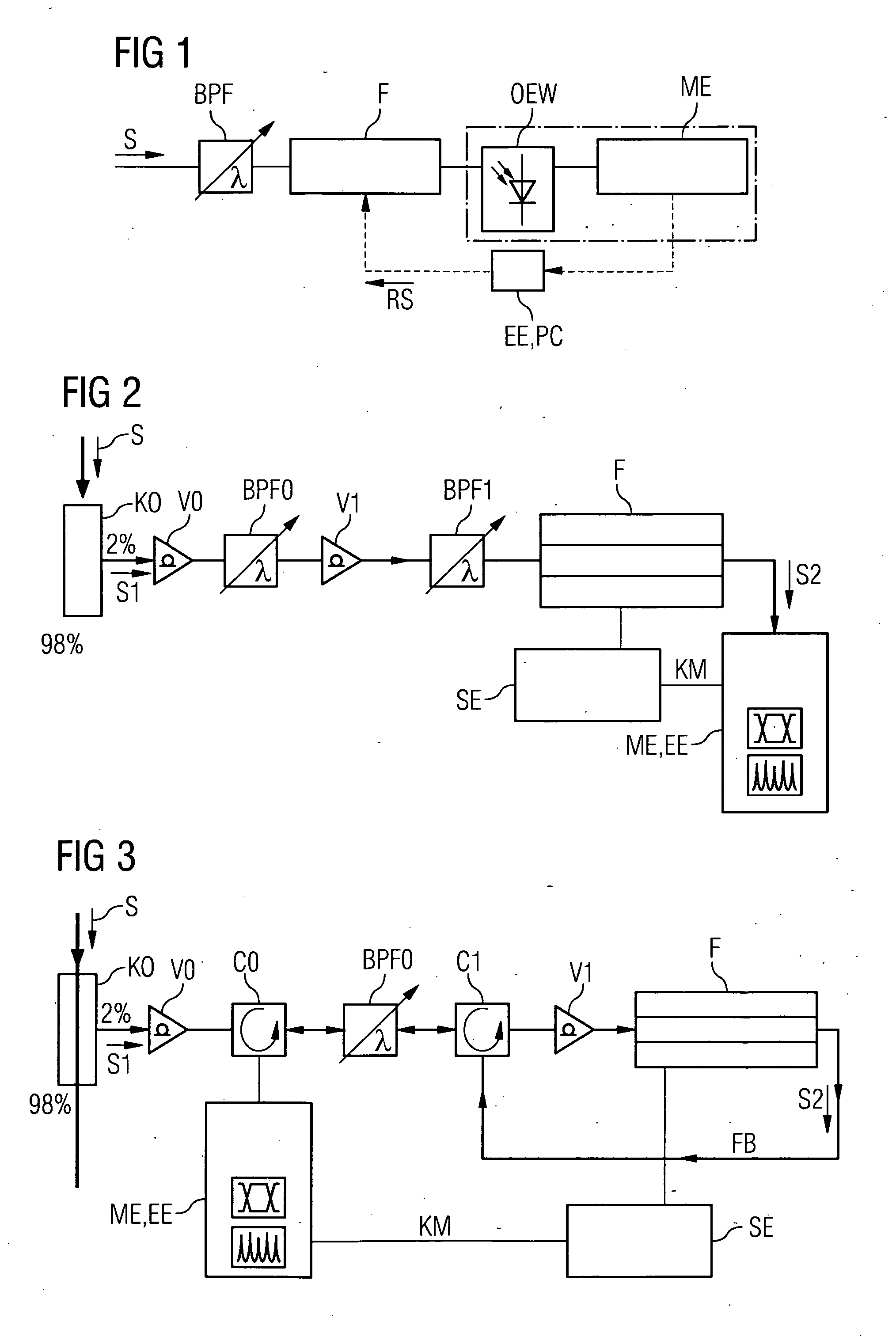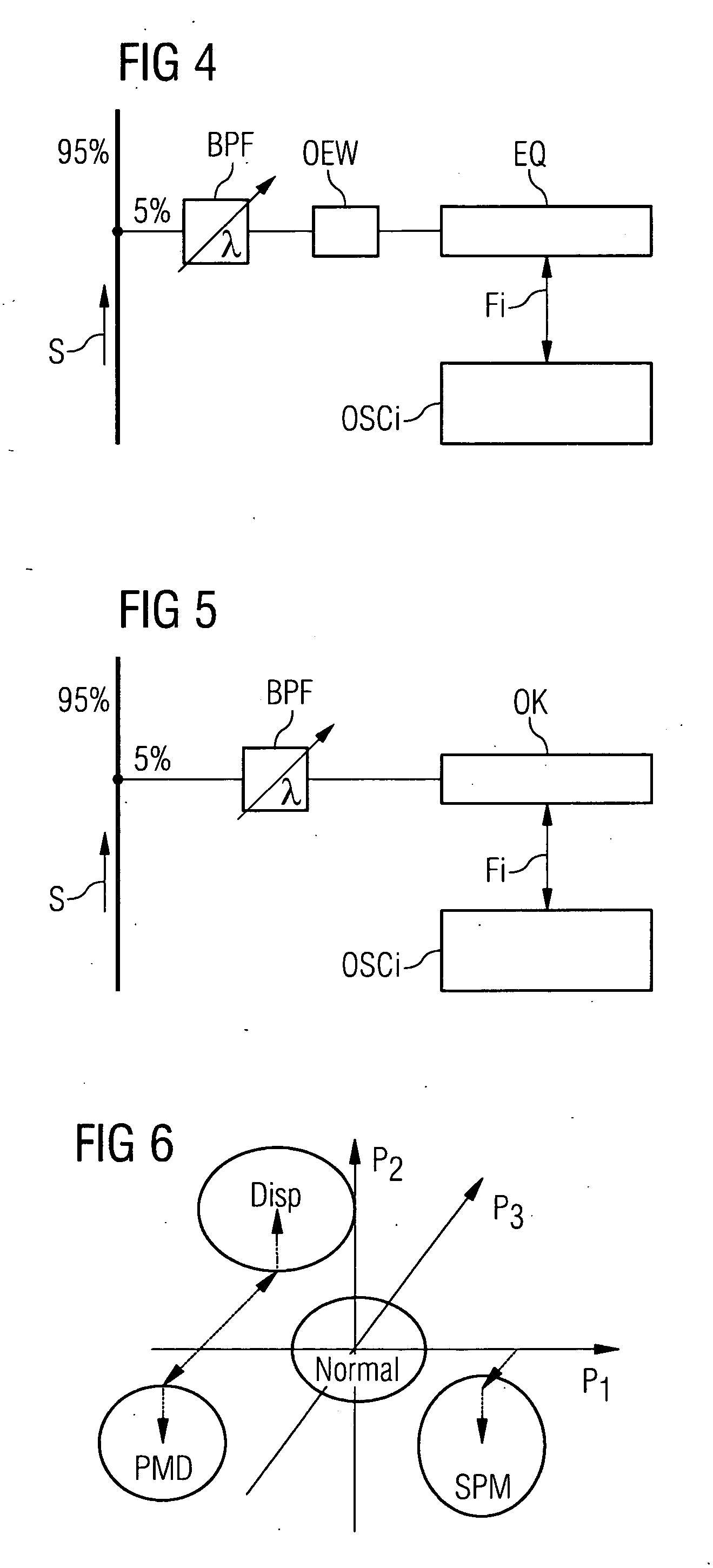Method and arrangement for determining signal degradations in the presence of signal distortions
- Summary
- Abstract
- Description
- Claims
- Application Information
AI Technical Summary
Benefits of technology
Problems solved by technology
Method used
Image
Examples
Embodiment Construction
[0047]FIG. 1 describes a basic arrangement which permits a determination of signal degradations or distortions, as applicable, for an optical signal S transmitted in a transmission system. At a measurement point in the transmission system, a fraction of the optical signal S is fed to an adaptive optical filter F, and is then measured from a measurement unit ME according to a quality parameter. For the measurement unit, use is made for example of an electrical spectrum analyzer or a power meter on a bandpass filter BPF, in circuit before the adaptive optical filter F for the purpose of isolating one optical channel wavelength. For this purpose, an opto-electric converter OEW is connected between the adaptive optical filter F and the measurement unit. However, the opto-electric converter OEW is in practice often integrated into the measurement unit ME). Here, a fast photo-diode is used. The use of the adaptive filter F in the optical domain is advantageous because it exerts its influe...
PUM
 Login to View More
Login to View More Abstract
Description
Claims
Application Information
 Login to View More
Login to View More - R&D
- Intellectual Property
- Life Sciences
- Materials
- Tech Scout
- Unparalleled Data Quality
- Higher Quality Content
- 60% Fewer Hallucinations
Browse by: Latest US Patents, China's latest patents, Technical Efficacy Thesaurus, Application Domain, Technology Topic, Popular Technical Reports.
© 2025 PatSnap. All rights reserved.Legal|Privacy policy|Modern Slavery Act Transparency Statement|Sitemap|About US| Contact US: help@patsnap.com



